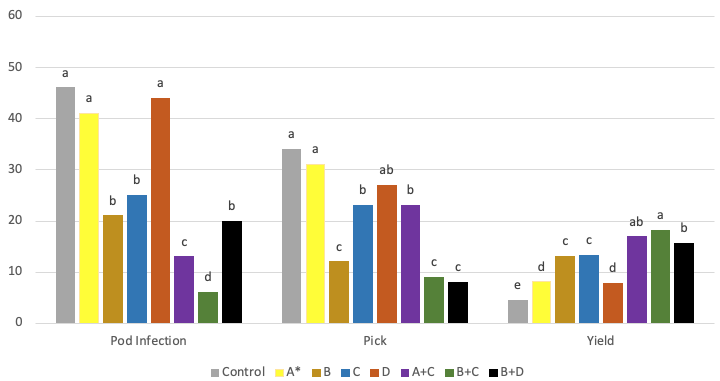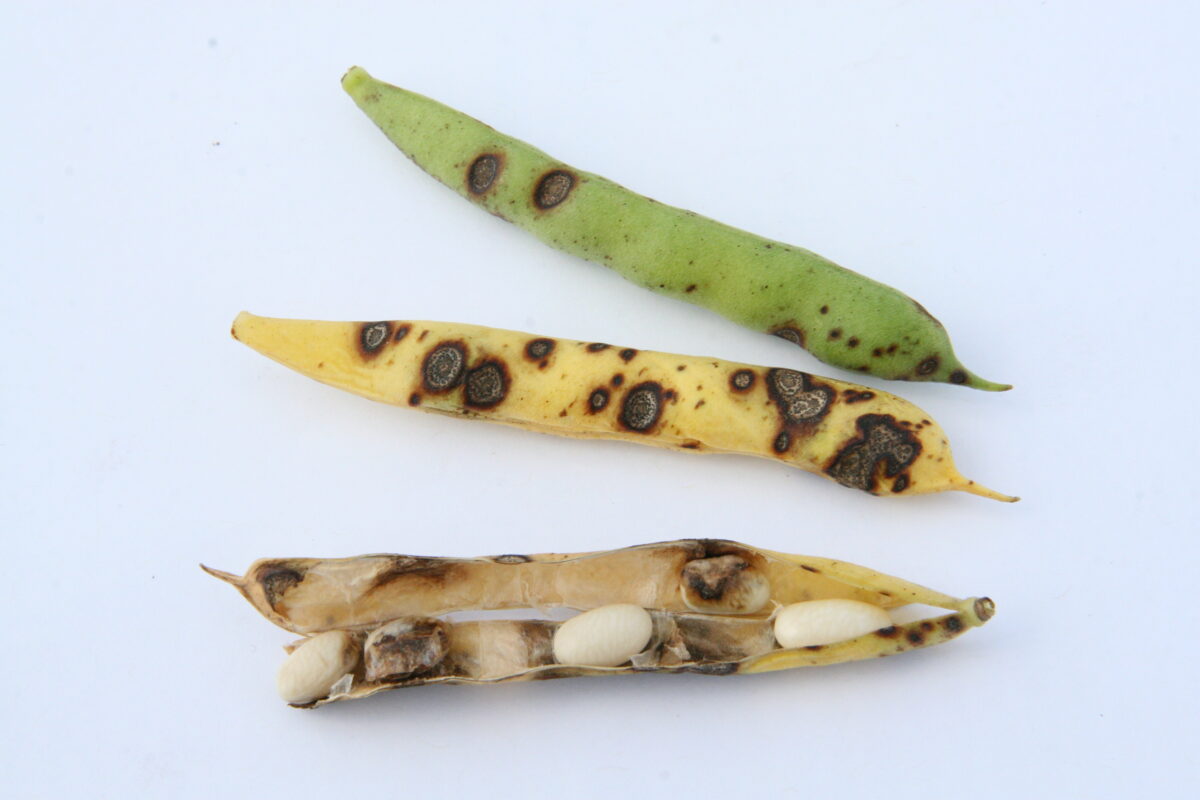Anthracnose is a serious fungal disease of beans, reducing yield and visual seed quality. Once a crop becomes infected, strobilurin fungicides are the only management tool. The purpose of this study was to find the best timing for fungicide application, to control a seed-borne infection of anthracnose in a bean crop in Ontario and Manitoba.
Headline and Quadris were applied as a single application at 5th trifoliate (A), 1st flower (B), full flower (C) and 10 days after full flower (D), as well as at three combinations of A+C, B+C and B+D. Leaf and pod infection (%), maturity, pick, seed weight and yield were measured. Disease pressure ranged from low to high across sites.

Bars within a group with the same letter are not significantly different (P<0.05).
* A = 5th trifoliate, B = 1st flower, C = full flower, D = 10 days after full flower
Headline and Quadris performed similarly at lower disease pressure, but Headline was better at higher disease pressure (data not shown). For a single fungicide application, the A timing was best under lower disease pressure, but B or C timing was best under higher disease pressure (Figure 1). For the combination fungicide timings, A+C gave the best results under low disease pressure, while B+C had the lowest pod infection and seed pick, and the highest yield under higher disease pressure (Figure 1). Overall, the combination fungicide timings gave higher disease control, yield and seed quality, compared any single fungicide timing.
Originally published in Canadian Journal of Plant Science 2012. Volume 92. Pages 1-10. Updated in July 2020 for drybeanagronomy.ca.
